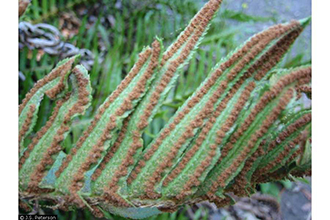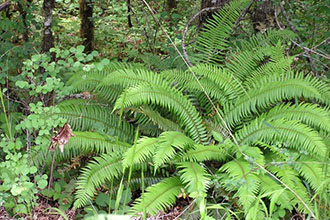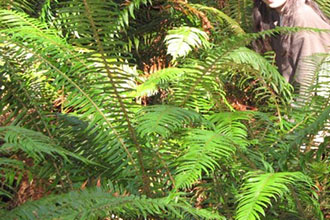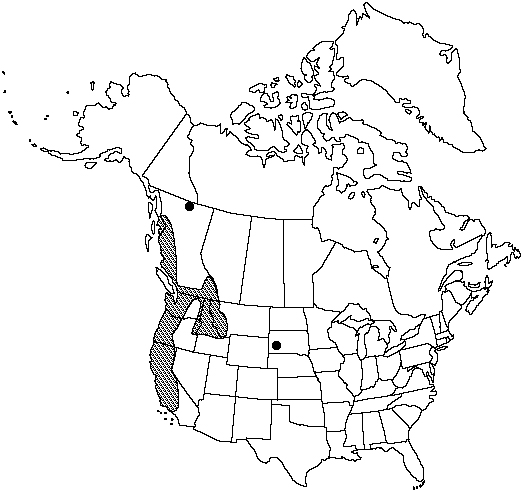Taxonomy: Kingdom - Plantae (plants). Subkingdom - Tracheobionta (vascular plants). Division - Pteridophyta (ferns). Class - Filicopsida. Order - Polypodiales. Family - Dryopteridaceae (wood fern) Genus - Polystichum Roth (hollyfern). Species - Polystichum munitum (Kaulf.) C. Presl (western swordfern).
Ecology: Western sword fern is a relatively large, evergreen, long-lived fern with long fronds arching from a short, scaly, erect rhizome. The sword-shaped fronds are from 50-180 cm and divided pinnately. Individual fronds live for several years and remain attached to the rhizome after withering. The largest leaflets or pinnae are 3-15 cm...Amount of light received influences western sword fern form. Following disturbance that removes the overstory or when plants occasionally establish on rocky outcrops at high elevations, the fronds are dwarfed and more erect.
The light wind-borne spores of ferns enable them to swiftly colonize new sites; however, western sword fern's ability to colonize appears limited by its sensitivity to water stress. On Vancouver Island it is not present during the pioneer stage of floodplain succession. Establishment occurs only under the shelter of a red alder canopy, and its frequency is greatest in the climax community. In the Coast Ranges of Oregon, western sword fern survives disturbances and becomes an important part of the seral vegetation while in the Cascade Range it is of minor importance in early succession.



